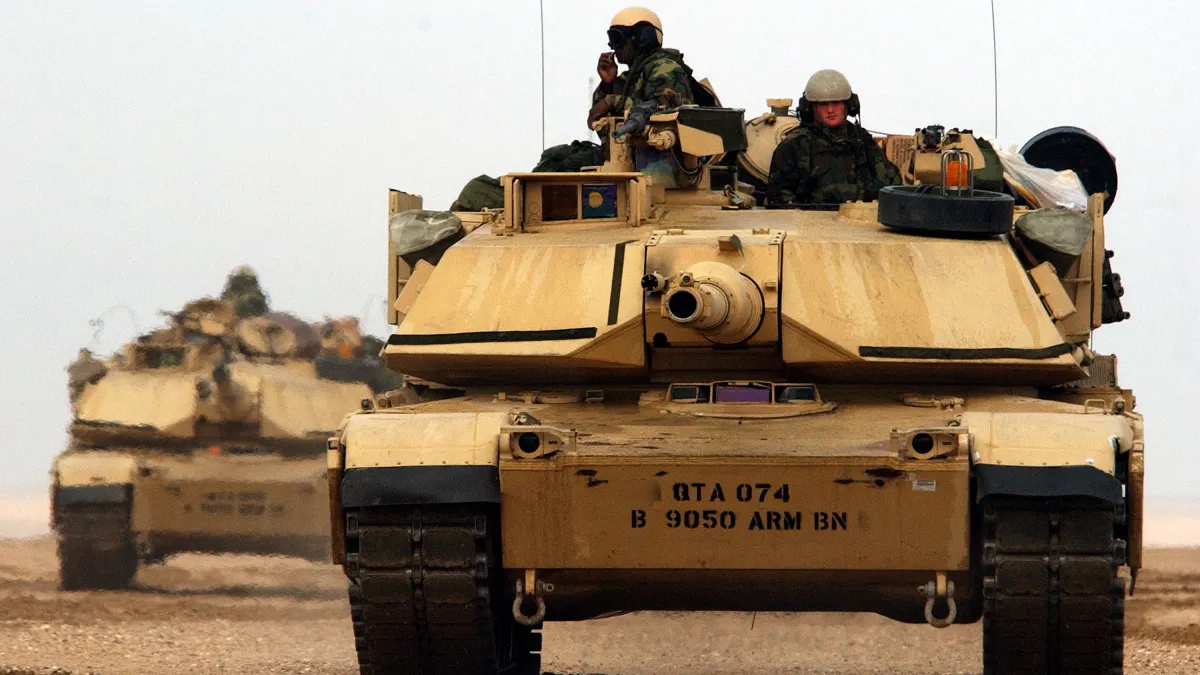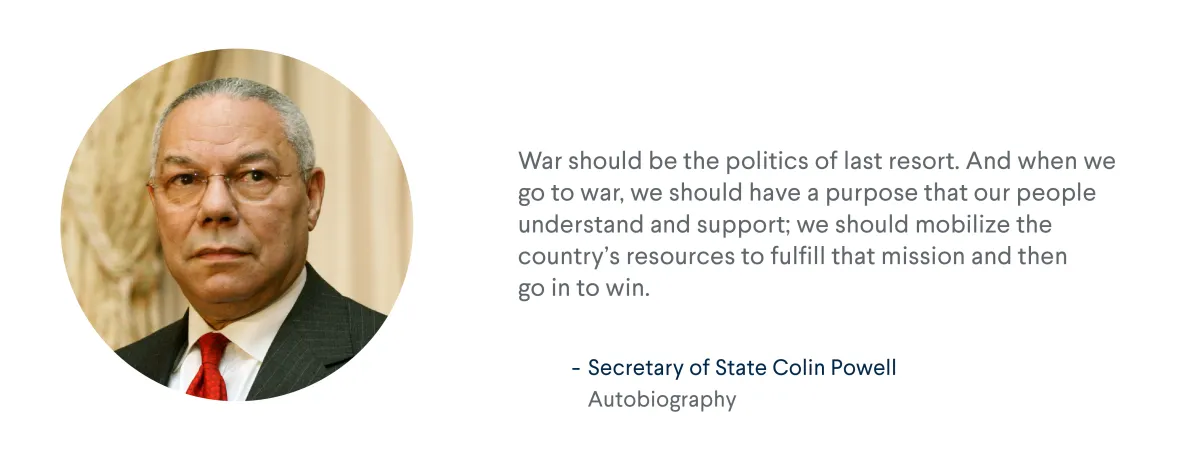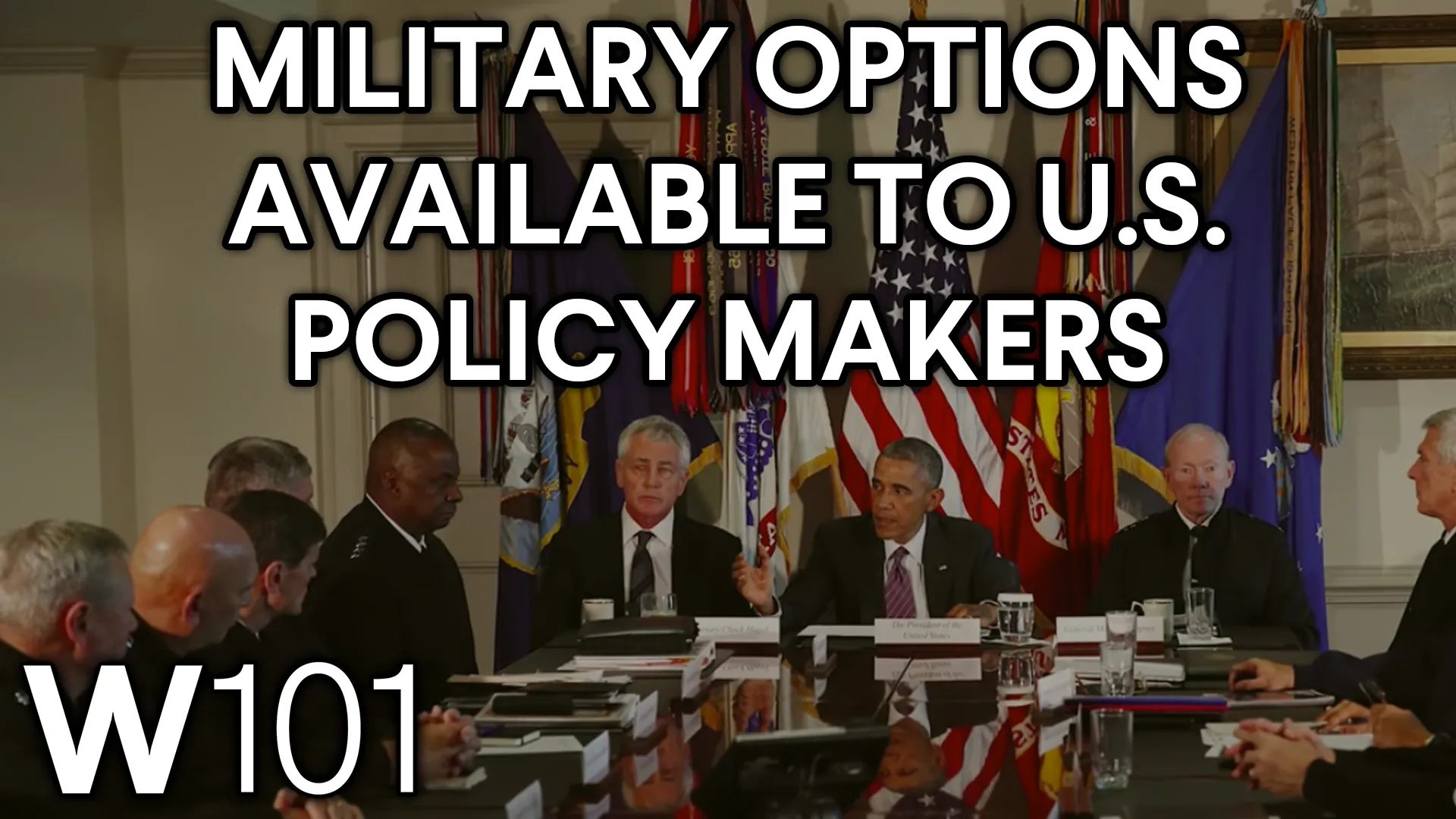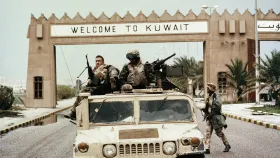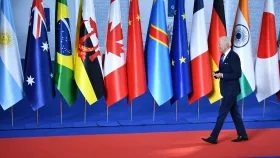What Is Armed Force?
In this free resource on military action, learn how countries use violence, or armed force, to influence foreign policy.
Teaching Resources—Tools of Foreign Policy: Introduction (including lesson plan with slides)
Higher Education Discussion Guide
Imagine for a moment that you’re president of the United States, and a close partner has been invaded.
How do you respond?
You’ve tried diplomacy, but the aggressor has ignored your overtures. You’ve imposed economic sanctions, but the invading country continues to occupy its neighbor.
Your advisors suggest military intervention could reverse the situation, but such actions would be highly expensive and endanger American lives. The outcomes of military intervention are also uncertain and difficult to calculate. Would you authorize it?
Armed force is often a policymaker’s most powerful tool. However, its significant costs and associated risks mean it is frequently a last resort.
In this resource, we’ll explore the reasons countries use armed force. We’ll also analyze the factors policymakers consider before using this tool.
Armed force definition
Armed force encompasses using or threatening violence to influence a situation.
Countries use armed force to achieve various objectives. In recent years, for instance, Russia has used armed force to change borders by annexing Ukraine’s Crimean Peninsula. This use of armed force is designed to threaten Ukraine against developing stronger ties with the West. Similarly, China has used armed force in its border dispute with its neighbor, India. Separately, China threatens to use force to achieve unification with Taiwan. Meanwhile, the United States has used armed force to pursue various interests abroad. The United States has used armed force to combat terrorist threats, address humanitarian crises, and to oust unfavorable regimes. Military operations can also be conducted in self-defense. In this case, armed force can be used to quash civil unrest and to secure access to resources.
Armed force can entail marshaling enormous human and financial resources. As a result, policymakers need to weigh its benefits and risks against those of all other available foreign policy tools. Usually, officials turn to armed force when all other options have failed to influence a situation.
So what factors do policymakers consider before using armed force?
Objectives
Officials need to identify a clear purpose for a military operation. That can be narrow (such as eliminating certain targets) or broad (like removing a regime from power or conquering and occupying another country). Armed force without defined objectives can lead to unintended and prolonged military entanglements. Policymakers, therefore, should not only consider immediate military goals but also plan for the security and political situation that follows the initial combat operations.
Strength
Facing a stronger adversary, or one with the support of a powerful alliance, can make certain military objectives unattainable or too costly. Even if a country has the strength to successfully execute a military operation, leaders should be willing to dedicate the necessary time and resources to achieve their goals. Lacking such a commitment can undermine an operation’s chance of success.
Costs
Armed forces are an expensive foreign policy tool. Prolonged military commitments can cost trillions of dollars.Even limited operations—like air campaigns—can cost billions. As such, policymakers need to constantly weigh how best to use limited resources. Governments must decide whether the value of a prospective military operation justifies its potentially enormous price tag.
Risks
Operations can achieve their military goals but still produce significant issues. Armed force can endanger service members and harm civilians. Armed force can also yield secondary challenges like mass displacement, food shortages, and economic turbulence. Officials try to minimize risks with effective planning and more limited and targeted armed force. However, planning can only achieve so much, as many military operations cause unforeseen consequences.
Public support
Military operations can be widely unpopular when leaders fail to adequately justify the associated costs and risks. Broad opposition can create domestic political challenges and drive policymakers to limit the scope of such operations, potentially in ways that damage their effectiveness. That scenario is especially true in democracies, where leaders are accountable to voters.
Legitimacy
Under international law, countries must have valid reasons to use armed force. Countries have the right to self-defense and can respond to significant human rights abuses. UN Security Council resolutions can authorize using force and help facilitate multilateral cooperation on military operations. Although official approval isn’t always necessary, military action deemed illegitimate can damage relations with other countries. At worst, it can trigger reprisals such as sanctions or even armed intervention by others.
What forms can armed force take?
Once policymakers decide to use armed force, they also need to determine how the operation will take shape: Where and when will it occur? How much and what kind of force is best suited to the objective?
Armed force comes in many shapes and sizes. Military intervention can be dialed up or down based on the situation. With threats of force or the provision of arms and military know-how to partners, governments can sometimes achieve objectives without actually resorting to combat. On the limited end of the combat spectrum, countries can conduct drone or other missile strikes. Governments can also deploy small special-operations forces to accomplish targeted goals. On the expansive end of the spectrum, countries can mobilize large conventional forces or even use enormously destructive tools like nuclear weapons.
Countries can also decide to use armed force in coordination with others (multilaterally) or by acting alone (unilaterally). Multilateralism allows countries to pool resources, enabling them to share the burden of complex and costly operations. Working with others can also give actions greater domestic and international legitimacy, garnering them more support. On the other hand, unilateralism can allow countries to quickly pursue their goals. Moreover, unilateral military action allows governments to retain more freedom of action.
Countries can use armed force in countless ways, but let’s explore three broad forms of this foreign policy tool.
Threats
Often, threatening force can be as effective as using force itself when preventing others from harming one’s interests. Countries can maintain peace and dissuade bad behavior by persuading would-be aggressors that any attack will be met with a significant response; this practice is known as deterrence. Countries can signal their seriousness by carrying out weapons tests, conducting military drills and providing partners with training and equipment. Governments can also position troops near contested regions for strategic effect. For example, the North Atlantic Treaty Organization, or NATO, periodically conducts air and naval exercises in the Baltics to illustrate its preparedness and commitment to defend its members. Especially as Russia has grown increasingly assertive with its military presence in the region.
Limited force
When deterrence fails, countries can employ force without resorting to full-scale war. Instead, they can pursue narrow objectives or restrict the types and amount of force used. Governments have various smaller-scale military options at their disposal. These tools include missile strikes, cyberattacks, special forces operations, and even short ground-troop campaigns. Limited force has the benefit of minimizing costs, but it does not eliminate risk. Since 2004, for instance, the United States has conducted more than fourteen thousand drone strikes against presumed terrorist targets in countries including Afghanistan, Iraq, Pakistan, Somalia, Syria, and Yemen. However, even supposedly pinpoint-accurate operations have inadvertently killed hundreds—if not thousands—of civilians. Additionally, many experts note that such attacks have radicalized local populations and produced intense anti-American sentiments. In this way, these attacks undermine the original purpose of the military operations.
Significant force
When limited force fails or is not the most appropriate option, countries can mobilize the full might of their militaries. Significant force can be utilized to completely overwhelm an enemy, secure its surrender, and even topple the opposing regime. Such actions are usually a policymaker’s most powerful tool—but also the riskiest and most expensive. In 2003, the United States invaded Iraq along with a handful of partners, citing the supposed threat of Iraqi weapons of mass destruction. The invading force, which lacked UN support, captured Baghdad within weeks. However the United States failed to locate any weapons of mass destruction, and a violent insurgency arose. Ultimately, nearly 4,500 U.S. soldiers and over 100,000 Iraqi civilians died in the war. The conflict cost the United States around $1 trillion and significant credibility worldwide. Today, the war is widely regarded as a mistake, and the United Nations maintains it was a violation of international law.
Armed force: a powerful tool—yet one with limitations
Like all foreign policy tools, armed force requires policymakers to weigh its benefits against its drawbacks. Armed force is immensely powerful but also costly and risky. When used carefully, it can stabilize situations or avert crises where all other tools would fail.
However, armed force rarely exists in a vacuum. Rather, it often operates in conjunction with other foreign policy tools. For instance, armed force can drive an adversary to the negotiating table, at which point diplomacy can help translate military victory into a stable and favorable political situation.
Accordingly, policymakers are required not only to select the right type of force for a particular situation but also the appropriate mix of foreign policy tools to use in coordination.
Now that World101 has covered the fundamentals of armed force, put those principles into practice with Model Diplomacy’s companion mini simulation on Armed Force.
